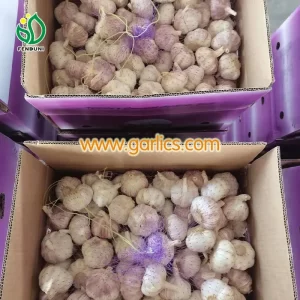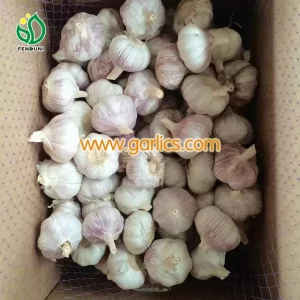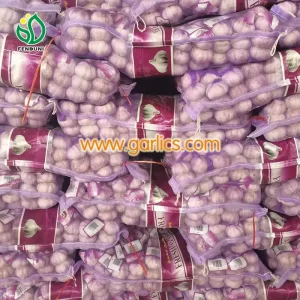Are you looking for the best garlic for planting? We have some essential secrets to help you choose the best garlic bulbs.
Garlic is an essential part of your kitchen, necessary for the taste. Moreover, garlic has many health benefits, including boosting your immune system. You can use many garlic recipes that can cure many ailments.
The best way to use garlic is to grow it at home to save money and find the best taste. You will also find information about the best place to buy garlic and how to separate garlic cloves for planting.
There are many varieties of garlic in the market for planting. How can you find a suitable variety for you? Here, we have different companion plants for garlic with all their details. Let’s see the various options so you can decide which is best for you!
Stiff Neck vs. Soft Neck
The primary differences between the hard-neck and soft-neck varieties are apparent when looking for garlic seeds for planting. Most gardeners can grow both, but the most important thing is to know the difference between them.
Hard Neck Garlic

Stiff neck garlic yields a central, firm stalk commonly called a scape. After the scape twists once, it is clipped off for optimal bulb development.
Hard-neck garlic heads are usually enormous, with only a few cloves present. Because there are fewer cloves to peel, they are slightly easier to cook and enjoy.
You must know that hard-neck garlic is more suitable for planting if you live in cold areas. It can withstand harsh winters, so it is frequently planted in colder climates. Sometimes, hard-neck garlic must undergo a period of cold hibernation to grow. This means you must be pickier about the stiff neck you grow, but this doesn’t mean you can’t grow it.
Hardneck garlic is attributed to some of the world’s hottest and most traditional garlic flavors. Let’s explore further options for hardneck garlic.
Porcelain
Porcelain garlic can be stored for up to 10 months for a hard neck, but its flavor deteriorates with time. Due to the larger cloves, one pound of this garlic seed should yield roughly forty plants.
Rocambole
The chef prefers garlic, which is rocambole in flavor. Each variety has a varied level of flavor strength. This garlic usually yields 8 to 12 loosely skinned cloves that are easy to peel. Their storage life is about 4 to 6 months, which is relatively short.
Although rocambole garlic is challenging to grow in humid settings, it becomes stressed by excessive watering.
Purple Stripe
Though they are usually slightly smaller than those in the rocambole family, they yield 8 to 12 cloves per bulb. Purple Stripe types preserve for four to eight months and peel quite readily. Unlike other garlic, Purple Stripe garlic has a more robust flavor as it ages.
Glazed Purple Stripe
This variety of garlic is generally resilient and not very picky. A typical bulb produces eight to ten cloves.
Marble Purple
Despite the gorgeous purple-streaked wrapping, the cloves are more on the brown side. Typically, each bulb yields six or eight big cloves. This garlic grows well in almost any environment, making it a nearly perfect choice for home cultivation.
Creole
Creoles are one of the three weakly bolting complex neck types; they resemble soft necks more when they develop.
They are best suited for areas with steady, year-round temperatures because they are weather-dependent.
Asiatic Garlic
Asiatic garlic is another stiff neck that bolts weakly and won’t form scapes in warmer areas. Generally speaking, you can grow them quickly and mature several weeks earlier than most other varieties of garlic.
Turban
One of the first garlic to be harvested, this hard-neck garlic that bolts weakly is an excellent option for gardeners with short growing seasons. Still, it’s also reasonably adaptable and thrives in hot climates. A standard bulb produces six to ten cloves.
Soft Neck Garlic

As previously indicated, soft-neck garlic thrives in warmer regions. You’re more likely to discover soft-neck garlic at the grocery store because it moves faster than stiff-neck garlic.
Unlike hard-neck garlic, soft-neck garlic lacks a blooming stalk or scape. Warmer conditions are often preferable for growing soft-neck garlic.
These kinds store for up to a year and have a fantastic shelf life. The two varieties of soft-neck garlic that you are probably going to come across are;
Artichoke
It features a couple of concentric rows of cloves, and peeling is usually somewhat challenging. However, it produces and keeps well, so you probably get this at the grocery store.
Silverskins
This variety of garlic consists of numerous little cloves and has white, silvery skins. Additionally, it has a great, robust neck that is simple to braid.
Elephant Garlic
It is ideal to plant elephant garlic in the autumn and harvest it in mid-June. The large bulbs yield a gorgeous purple allium flower you can leave in your garden as an added feature.
The elephant garlic for planting contains enormous cloves that are incredibly simple to separate due to their vast size. Because they peel easily, elephant garlic is convenient for cooking and gardening.
Like regular garlic, elephant garlic grows as an underground bulb that splits into five or six cloves.
Where to Buy Garlic for Planting?
Do you want to buy garlic bulbs for planting? You can find them at local and online markets.
· Farmers’ markets have garlic plants for sale
· Nursery or garden center (visit stores in late summer or early autumn)
· Catalogues for garden seeds (some seed suppliers carry stock of garlic bulbs for planting)
· You can also place online orders for garlic. You must search “Where to buy garlic bulbs for planting near me.” Garlic seed suppliers accept orders in early spring and ship at the time of planting.
Summary
The ideal kind to grow in your home garden depends on two essential factors:
· The local climate
· Your taste preferences
There is a difference between the taste of hard and soft neck garlic. Soft-neck cultivars thrive in warmer regions without severe winter freezes, while hard-necks are more resilient and can withstand lower temperatures. You can find the best option according to your climate and taste.

